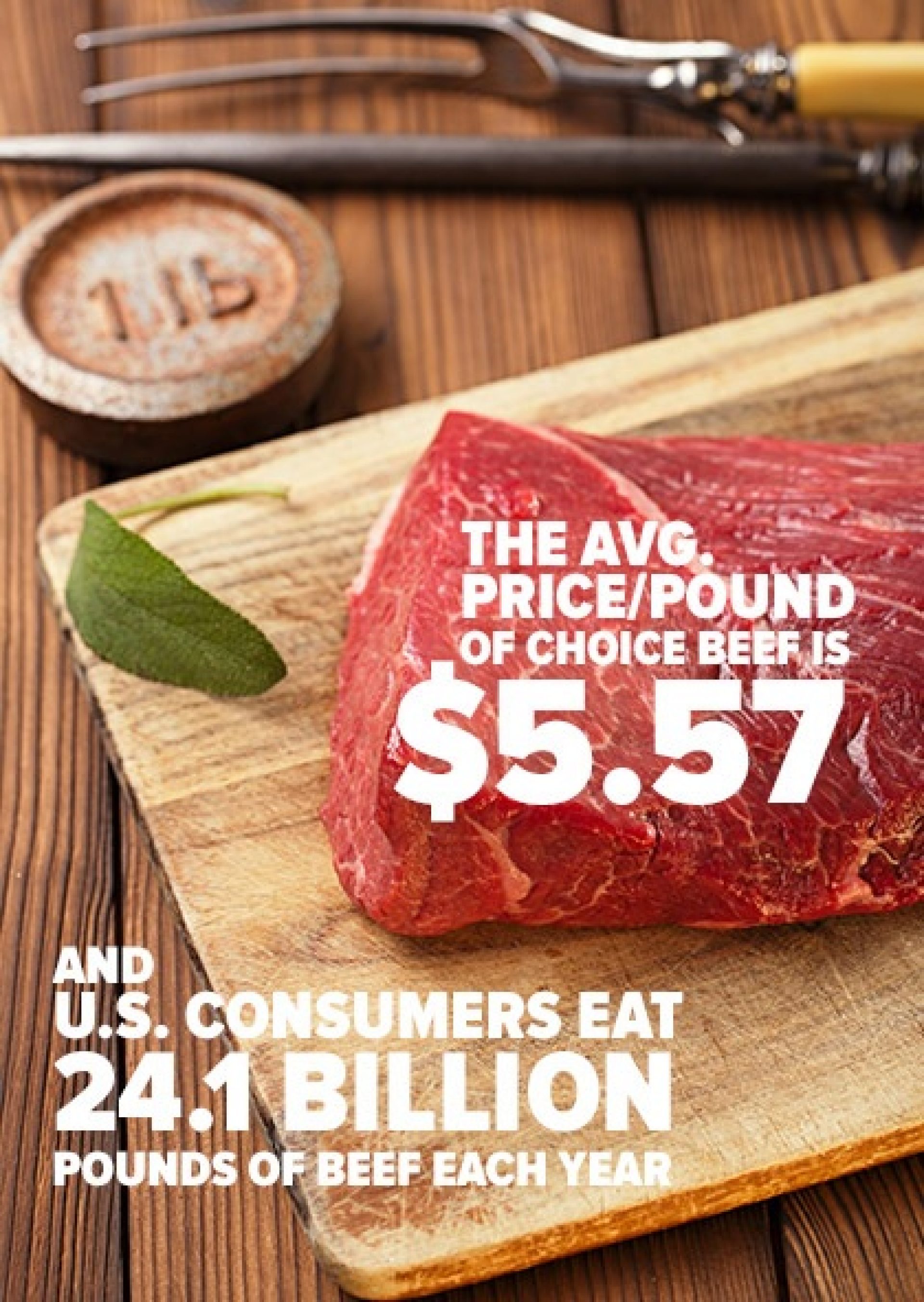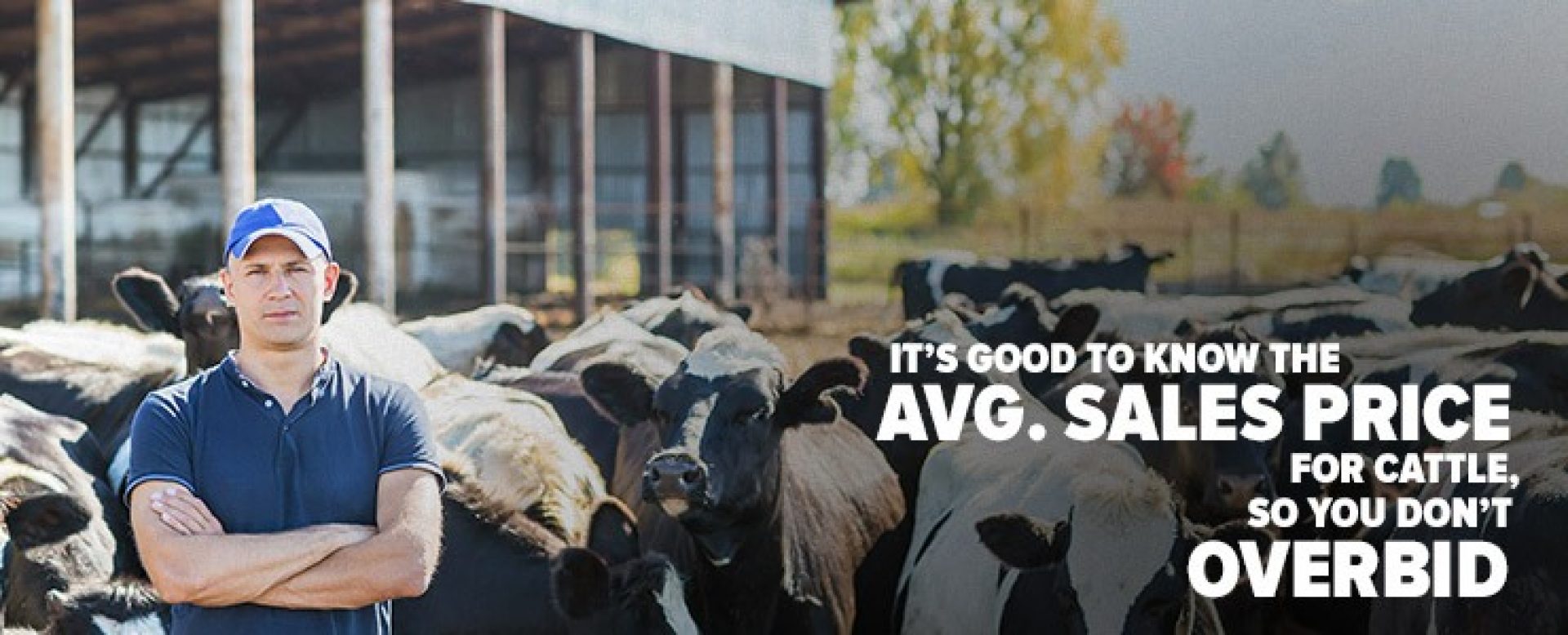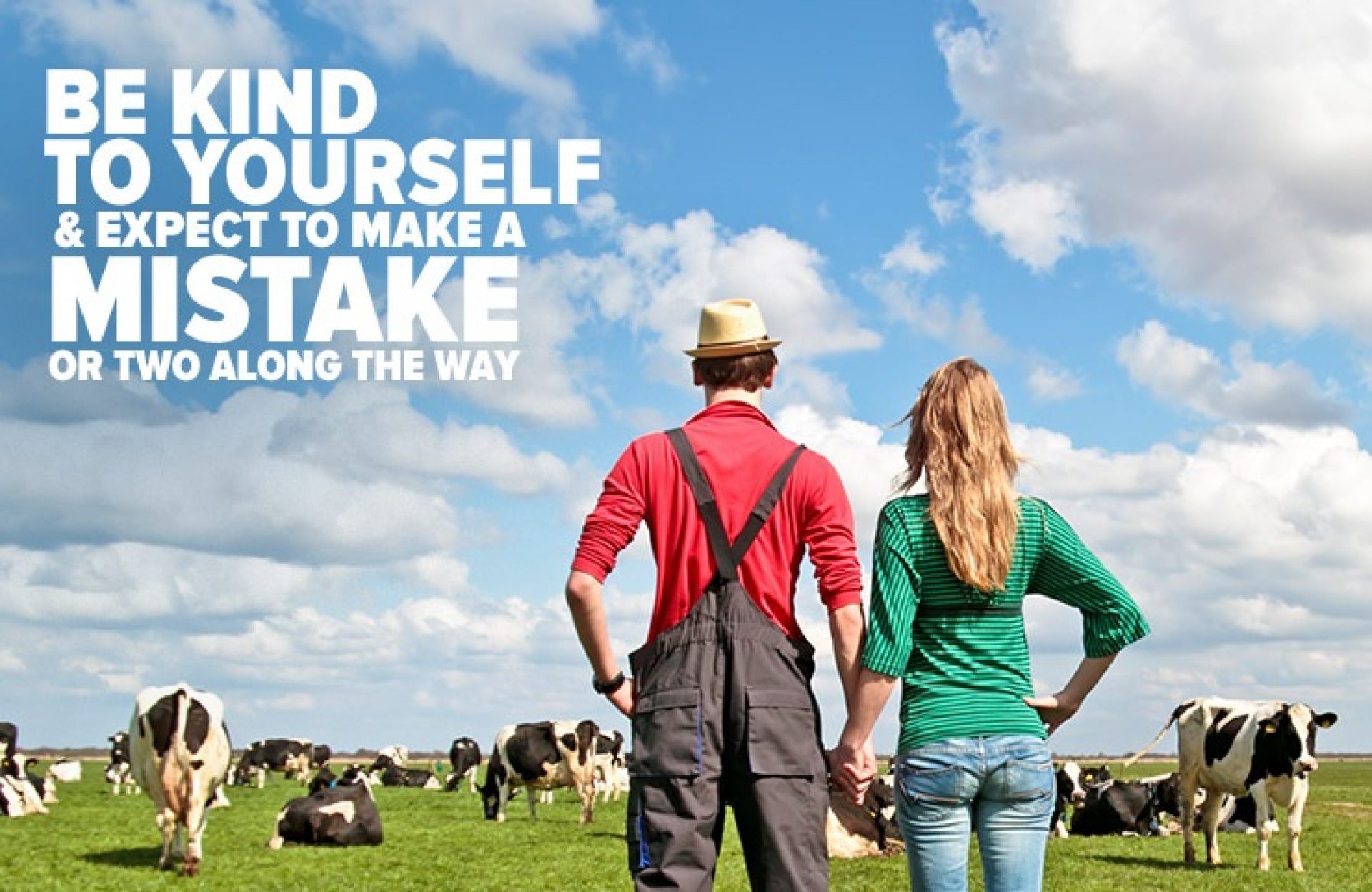Buying Cattle at Auction: What You Need to Know
The pungent scent of hay and manure mingles in the air. You've entered the auction barn, and it's your first time buying cattle at auction. There's a lot to learn when it comes to purchasing cattle at auction and beef cattle are popular livestock to raise. With the average price per pound of choice beef at $5.57 per pound, and U.S. consumers eating 24.1 billion pounds of beef each year, it's no wonder that so many people are interesting in purchasing cattle at auction. Raising livestock is profitable.
With the right fencing and pasture, starter cattle can be fattened to sell at auction or raised for your own table. The trick to profitably raising livestock is knowing how purchasing cattle at auction works, and knowing how to invest in the best livestock possible.
Why Is Buying Cattle at Auction Better?
You can purchase cattle directly from a farm or ranch. There are brokers called order buyers who can also procure livestock for you. The most popular and perhaps most cost-efficient method of purchasing beef cattle is through an auction.
Auctions are great for buyers. At an auction, you can see dozens of cattle at one time and choose specific lots to purchase. If you went to a farm or ranch to buy cattle directly from a breeder, you'd be limited to animals from his specific herd. At an auction barn, you'll see animals raised on many different farms.
You'll also get your pick from among the many different beef breeds popular in the United States. Black Angus remains the most popular meat. If you raise Angus cattle, you're likely to have an easier time selling it than other less popular meats such as Jersey. Jerseys, although a dairy breed, are said to have succulent meat. The yellow fat content in Jersey meat, however, makes it a hard sell to the public. Stick with breeds such as Angus, Charolais or others that produce easily marketable beef.
Auctions rely upon bidding to set the sales price. On a good day, animals command premium prices. You can go to the USDA's livestock reports online and view the average sales price for animals you're interested in. This way, you have a base rate in mind before bidding. It's good to know the average sales price for cattle you'd like to buy, so you don't overbid.
Types of Livestock Auctions
Livestock auctions generally fall into two categories: regular weekly sales and special sales:
- Regular sales are held each week at a specific date and time. For example, an auction house may have a weekly livestock auction every Friday at 10 a.m. Regular sales attract all types of animals, but you'll routinely see dairy bull calves, dairy cull cows and finished beef (beef cattle ready to head to final fattening and slaughter).
- Special sales occur at a specific date and time set by the auction house, and they're limited to a select type of animal. Special sales may be sheep sales, goat sales, or beef cattle sales. At a special sale for beef cattle, you're likely to find young cattle to start your beef cattle herd. You can find young calves, replacement beef sales, and starter herds. Starter calves are young animals ready to go out to pasture for fattening and development into final meat-producing animals.
Most auction houses today have websites where you can find information on both types of sales. It's a good idea to visit the auction house several times before you intend to buy any animals. You can watch a few auctions to understand the lingo and setup. You can also meet the sales manager or owner. Managers and owners are usually happy to introduce you to the world of auctions, and may introduce you to experienced farmers who can help you learn how to bid.
Know What Cattle to Buy
Before buying cattle at auction, make sure your farm is set up for beef cattle. These heavy animals need sturdy fencing and good pasture to gain the weight necessary to command top dollar for their beef. Talk to your local Cooperative Extension agent for more information on the appropriate pasture grasses to plant, how to manage your pasture, and how to detect and remove any noxious weeds.
Once your pasture is established and you're sure you have the fences, gates, chutes, troughs and other necessary equipment, it's time to decide what type of beef cattle to buy. Cattle are bred for different characteristics. In the United States, most meat is produced by Black Angus or Angus bred cattle. These mid-sized animals produce tasty meat that is well-known to the general public, so you shouldn't have trouble selling it when the time comes.
Large-framed cattle such as Charolais "finishÀ or are ready for slaughter when they reach 1,300 pounds, while Hereford and Angus are ready at 1,100 pounds. Take the finished weight into account when selecting breeds to raise.
Cattle can gain one to two pounds grazing on pasture each day. If you plan to graze your cattle only during warmer weather, and sell them off or slaughter them before the winter, calculate how many days of grazing time you'll have until it's time to sell them. Multiply grazing days by weight gain and subtract it from the finishing weight. You'll want to buy cattle that's around that weight.
For example, let's assume you have 180 days to graze cattle, with a weight gain of 180 (1 pound per day) or 360 (2 pounds per day). If you purchase Angus or Hereford, and you plan to graze them until ready for slaughter or sales, you'll want to find cattle around 700 to 800 pounds. If you have more time or more days to graze them, you can buy lighter animals.
Find Healthy Cattle
Another important factor when buying cattle at auction is finding healthy animals. Animals with signs of disease are usually culled before auction day, but you may occasionally see a calf with noticeable bumps, bruises, patches missing from his hide, or other issues. Sometimes these happen during transport or at the auction barn, but they can also be a sign of a bigger underlying issue. Do not purchase unhealthy animals unless you're an experienced cattle buyer.
Determine Age
The more experience you gain with livestock, the easier it is to determine the age of an animal by looking at them. Experienced horsemen, for example, can often guess a horse's age simply by looking at his top line or back and at the eyes and legs, which both show telltale signs of aging.
Cattle are no different. When you learn all you can about specific breeds of cattle, you'll get to know what a healthy specimen looks like at a particular age. Knowing how to spot a two-year old Angus or Hereford at a certain desirable weight is a great skill that can save you time at the auction barn. Although the animals will be grouped by age or breed, it will help you narrow down your choices quickly.
Learn How to Purchase Cattle at Auction
The big day is finally here and you're ready to buy your cattle. First, make sure you have cash or checks on hand. Most auction houses don't accept a credit card.
Bring a truck and stock trailer with you, or have a friend or neighbor on call who can pick up your animals. Some livestock barns will hold your purchase overnight until you can arrange for transportation, but many want the animals moved out that day to make room for new stock coming in.
Wear old clothes such as jeans and work boots. You may also want to bring a manure fork or shovel and bucket with you. Cattle produce manure — a lot of manure. You may need to shovel out the trailer before hitting the road.
Once at the auction house, you will have to register for the auction at the office. You'll be given a numbered placard or sign. When you want to bid, you hold up the sign.
The auctioneer talks in a rapid-fire way that seems like nonsense until you get used to it. Most auction houses also have helpers who call out "Yep!À or use some other signal to tell the auctioneer that someone is bidding.
Here is some advice from seasoned bidders on how to have a great auction experience:
- Watch the bidding first before making your own bid. Some seasoned buyers use hand signals rather than their signs to bid. It can be hard to spot them at first. You may not want to bid up against them.
- Don't be the first bidder. Let someone else start. Take your time.
- Never wave or stand up to greet someone. You may accidentally find yourself buying an animal you didn't intend to buy.
- Buy cattle in pairs, or at least take home two. Cattle are herd animals and need a companion or they might not be happy. Happy cattle put on weight more quickly than unhappy ones.
Once you buy your cattle, you must pick them up. Auction houses typically have a loading chute where you claim your animal. You'll pay for your animals, and receive a bill of sale in return. You can show the bill of sale at the chute, and the auction staff will locate your animal for you.
Most auction houses allow you to load your purchases as soon as you're done paying for them. If the auction is still going on, you can drive around to the loading chute and pick up your animals, as long as they are paid for.
If you're not comfortable backing up a stock trailer, make sure you either practice beforehand or find someone to help you. Backing up to a loading chute in a strange place can be hard if you're not used to handling a rig.
The handlers will help get your cattle loaded. Once home, the faster you can get the cattle settled into their new environment, the better.
Don't forget to pick up the animal's health papers. Most auction houses demand basic health papers for cattle sent to auction. These papers help you know which vaccinations your animal has received, as well as any potential health issues. You should obtain a copy before you head home.
Understand How to Handle Newly Purchased Cattle
If you already have a herd of cattle, keep your new auction purchases separate from the herd for a week to 10 days. Talk to your veterinarian about a vaccination schedule. Ask the vet to the farm as soon as possible to vaccinate your cattle and check their health before introducing them into your existing herd.
Cattle purchased at auction aren't returnable. By taking a few common sense precautions — such as isolation and vaccinations with your newly acquired animals — you should be able to ward off most problems.
Beware of the Cheap Sale
You've heard the old adage, "You get what you pay for.À When buying livestock, keep that saying in mind. A bargain isn't a bargain when you find out that the pregnant cow you paid good money for is actually barren, or the calf you bought has scours and needs immediate attention.
Before you head to auction and start bidding, acquaint yourself with the experienced farmers in your area. Watch how they bid and see what they're buying. If they always wait for a particular lot or ranch's offerings, take note. They know quality, and they probably wait for it.
Also watch them to see which animals or lots they avoid. Just as they can spot quality, they can also spot sick animals or those with poor breeding.
Also beware of very low starting bids. It's true that a seller may be highly motivated for a quick sale, but an auction house is in the business of making money. Auctioneers want the animals to sell at the highest possible price. It's good for business and good for their bottom line. Animals that are significantly underbid signal a problem.
Be kind to yourself and expect to make a mistake or two along the way. Learning to farm and raise livestock is like learning any other craft. It takes time and practice to do it right.
Raise Cattle Right
At Arrowquip, we believe that quality equipment helps you raise good cattle. With the right chutes, fencing and other livestock handling equipment, you'll be able to do more in less time, with less stress on your animals.
Sturdy fences and gates — as well as solid chutes that can handle many animals over long periods of time — are great additions to your cattle operation. Whether you need stationery or portable handling systems, Arrowquip has what you need to get the job done right the first time.
Visit our blog for more helpful articles about farming and ranching, or learn more about our cattle chutes and handling equipment.







Comments
Join the Discussion
Comments
It makes sense to check for underlying health issues before buying cattle to ensure they are healthy. My aunt and uncle want to buy a stud bull for their cattle farm this month. I'll make sure they keep health in mind as they search for the right bull to purchase this week.
That was a very helpful info. Thanks a lot. can i go to un auction to buy one or to animals for myself.
Very well written and totally agree with you. When buying any livestock at auction you get what you pay for. Watch and learn what is going on before you start bidding and always take a pair home with you.